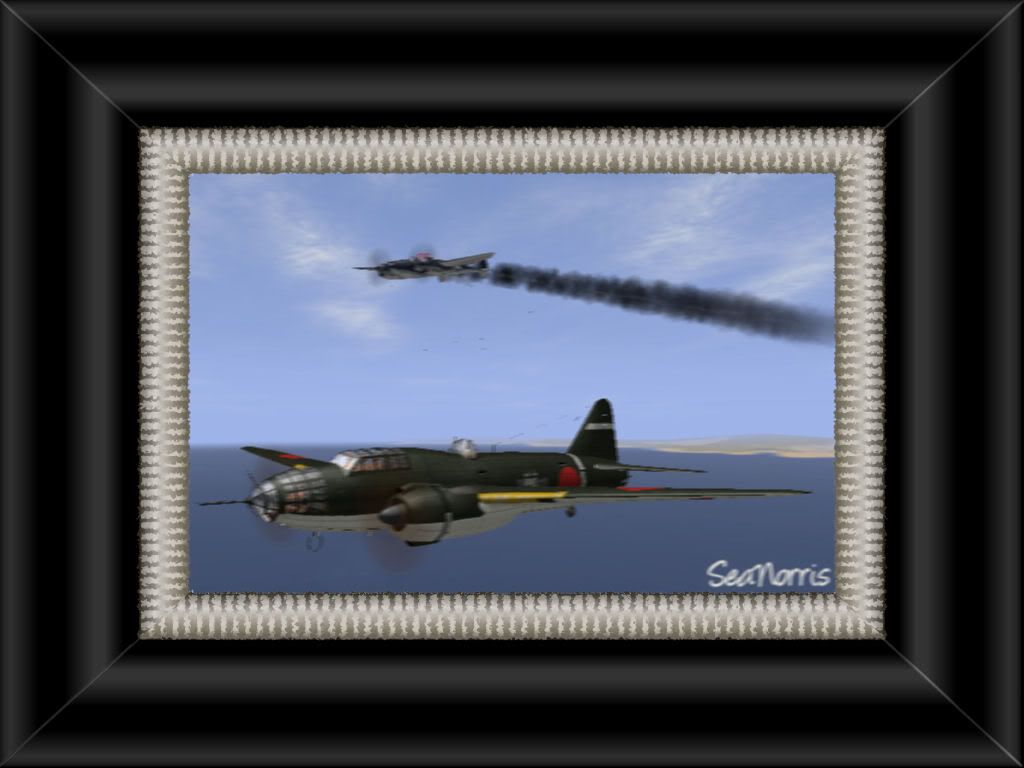G4M2E Ohka Carrier at skinnersheaven
Posted: Sun Jun 26, 2005 1:08 pm


Thanks to Jesters-Ink For the template.
http://www.skinnersheaven.com" onclick="window.open(this.href);return false;
The Mitsubishi G4M, with the Zero fighter, was one of the most famous Japanese planes of WWII. It is significant of Japan's role as a naval power in the 30s and 40s that this bomber was a Navy plane. The Imperial Army's air wing was created as a support of ground forces, but the Japanese Navy air role was more important than in other world navies. It had not only to protect Navy bases in Japan, but also to carry long range bombing missions. The IJN was Influenced by the British strategic thinking of supplementing carrier forces with land-based units.
The G4M was basically an idea of Mitsubishi engineer Hanjo Kiro. He was asked a new design to replace the G3M Nell naval bomber. His idea of a four-engined aircraft was rejected by the Navy that wanted a twin-engined bomber. Since the Navy specifications were about a long range bomber, Hanjo thought of a design whose wing would be a big fuel tank mounted in the middle of a cigar-shaped fuselage. This shape gave more room for bomb loading and the crew. It also had more and better defensive weapons than previous bombers. This design would not be very successful with Japanese airmen, who called it 'Flying cigar' and 'Year 1 lighter' from its official name 'Ishiki-Rikko' ('Year 1 Land Attack').
The G4M made its first flight on October 23, 1939. Its development was stopped for a year because the Japanese Navy wanted it to be changed into a long-range escort fighter (similar to the German Bf-110), however it was finally decided that Zero fighters fitted with drop tanks were more capable of carrying those tasks.
The new bomber had its first combat missions in China in the summer of 1941. In the outbreak of the World War, the G4Ms based on Taiwan attacked the Philippines on December 8, but their biggest success of the war was the sinking of the British battleship Prince of Wales and the battlecruiser Repulse off the coast of Malaya by 27 Bettys (their allied code name) armed with torpedoes on December 10 1941.
In the following months the Bettys raided Darwin in Australia and Port Moresby in New Guinea. They were also in constant action in the Aleutians, the Dutch Indies and the Solomons. Given their very long range of action, the G4Ms appeared almost anywhere and the Allies suspected the Japanese had found a way to make bombers take off from their carriers. The G4M's crews could fly twice the distance that their British counterparts made from Britain to Germany for their strategic bombing missions.
G4Ms operated throughout the six months of fighting on Guadalcanal, suffering heavy losses. By early 1943 the Japanese Navy had developed new techniques for night torpedo attack. These were put into effect on the night of 29-30 January 1943 in the Battle of Rennell Island, in which Bettys torpedoed and sank the heavy cruiser Chicago. G4Ms repeatedly harassed US task groups in night attacks until almost the end of the war, occasionally inflicting heavy damage, for example in February 1944 a Betty torpedoed the Essex Class carrier Intrepid after Task Force 58's raid on the Japanese base of Truk in the Caroline Islands.
However, all this espectacular success of the beginning of the war was soon over when their enemies discovered that the G4Ms were quite vulnerable to enemy fire and they were set on fire easily. Due to their design, all their wings were mainly fuel tanks that, furthermore, were not self-sealed and lacked armor. All this had been sacrified in favour of getting a long range of action. This led to the bad reputation of the Bettys among their own crews. It was so much so, that even Admiral Yamamoto died on one of them over Bougainville when his Betty was shot down by US P-38's on April 18, 1943.
The G4Ms were seen in any theatre of the Pacific war, from the Marianas to Okinawa and also in the defense of the Japanese homeland. As the war dragged, improved bombers failed to materialize so Mitsubishi fielded different versions of the G4M to fulfil new missions, and to eliminate the various weaknesses in the basic design. Front-line combat units operated many variants and sub-variants with different engines and armament packages. The G4M2 was a complete redesign but it did not overcome the airplane's vulnerability to allied firepower. Mitsubishi tried again to reduce the bomber's tendency to burn. The firm changed the wing configuration and installed self-sealing fuel tanks with a capacity about one-third less than earlier versions. The capacity dropped because of the material inserted in the tank to block leaking fuel when gunfire perforated the tank. Armour plate was also added to all crew positions and the tail turret was redesigned. As a result of these modifications, the fuselage was shortened and the center of gravity shifted forward. This version was called the G4M Model 34 but it was not produced in sufficient number to make an important change in the course of war.
In 1945 the Mitsubishi G4M2E version was even used as a mother aircraft for the Yokosuka MXY7 Ohka manned rocket, but this addition made the plane even slower and more vulnerable to enemy fighters, although if the G4M succeeded in launching the Ohka within range of allied ships, the effects could be devastating.